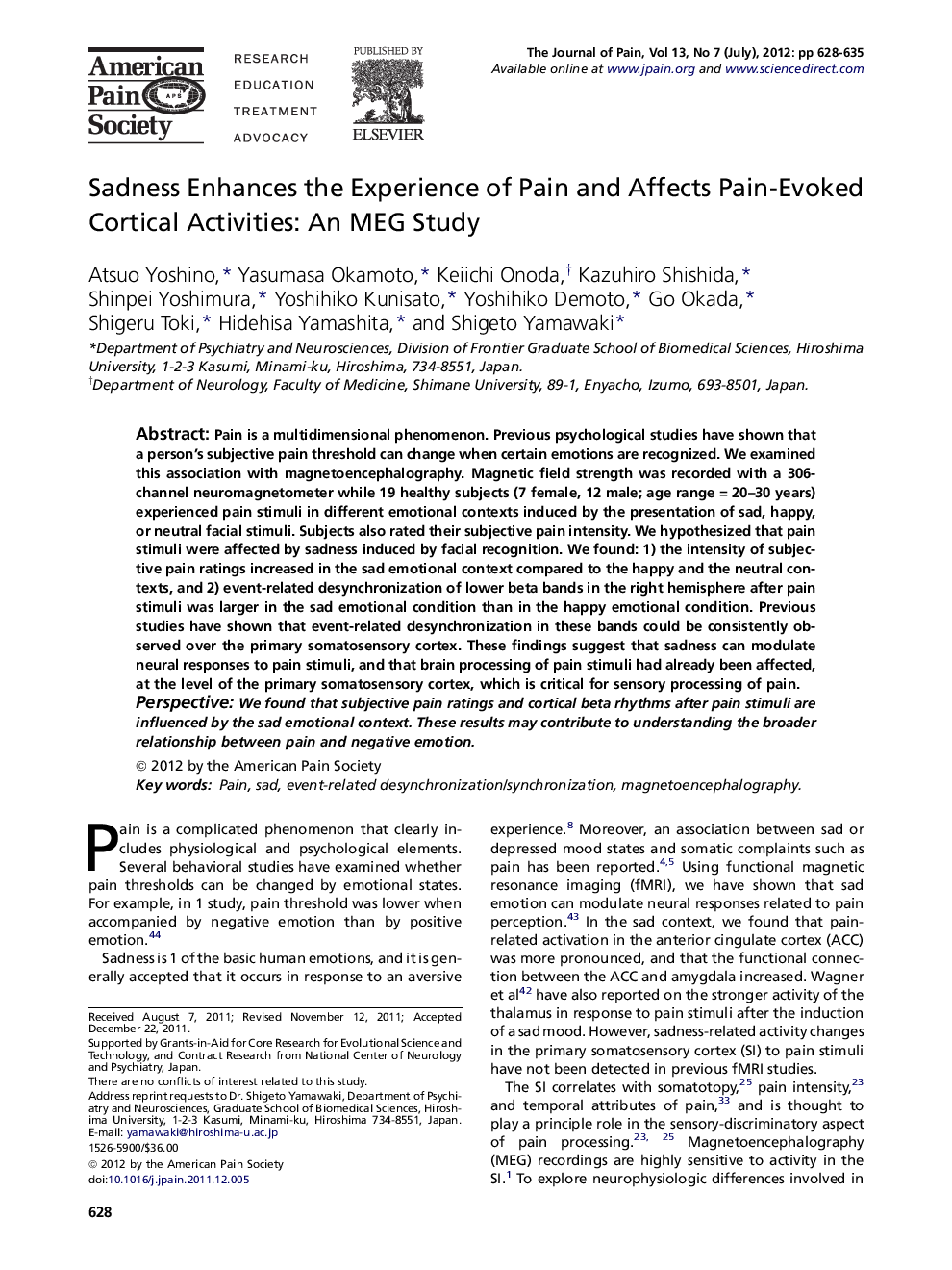| Article ID | Journal | Published Year | Pages | File Type |
|---|---|---|---|---|
| 2732336 | The Journal of Pain | 2012 | 8 Pages |
Pain is a multidimensional phenomenon. Previous psychological studies have shown that a person’s subjective pain threshold can change when certain emotions are recognized. We examined this association with magnetoencephalography. Magnetic field strength was recorded with a 306-channel neuromagnetometer while 19 healthy subjects (7 female, 12 male; age range = 20–30 years) experienced pain stimuli in different emotional contexts induced by the presentation of sad, happy, or neutral facial stimuli. Subjects also rated their subjective pain intensity. We hypothesized that pain stimuli were affected by sadness induced by facial recognition. We found: 1) the intensity of subjective pain ratings increased in the sad emotional context compared to the happy and the neutral contexts, and 2) event-related desynchronization of lower beta bands in the right hemisphere after pain stimuli was larger in the sad emotional condition than in the happy emotional condition. Previous studies have shown that event-related desynchronization in these bands could be consistently observed over the primary somatosensory cortex. These findings suggest that sadness can modulate neural responses to pain stimuli, and that brain processing of pain stimuli had already been affected, at the level of the primary somatosensory cortex, which is critical for sensory processing of pain.PerspectiveWe found that subjective pain ratings and cortical beta rhythms after pain stimuli are influenced by the sad emotional context. These results may contribute to understanding the broader relationship between pain and negative emotion.
